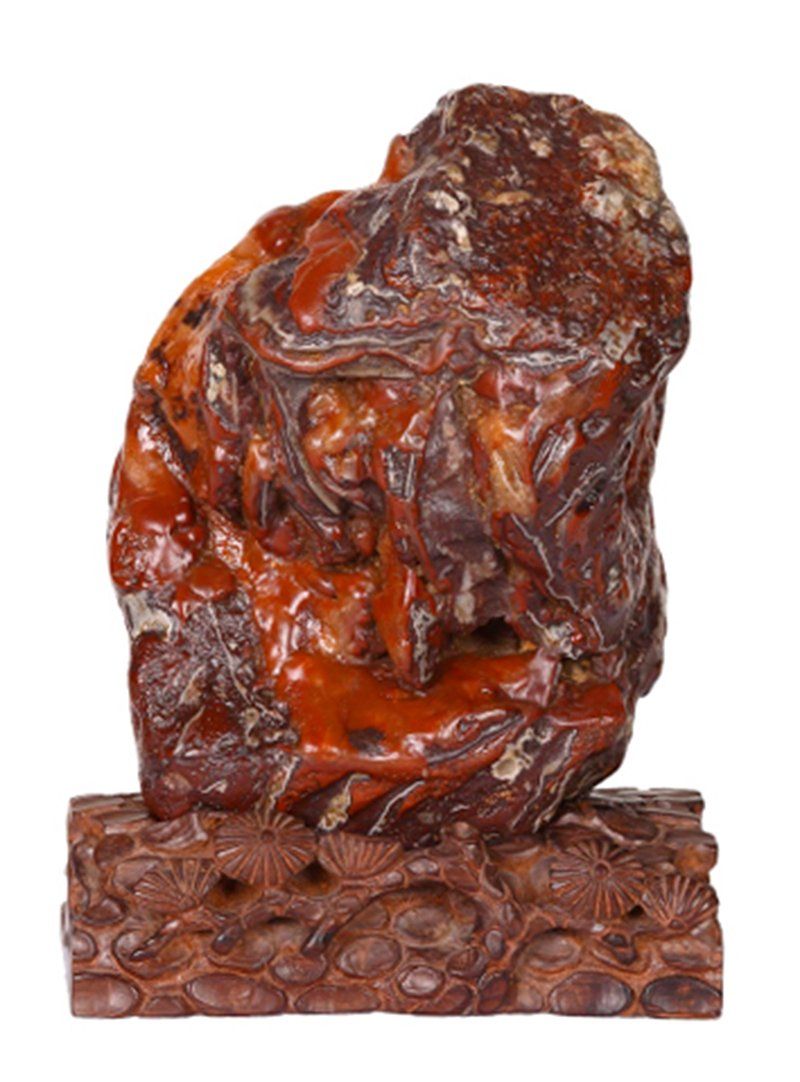Chinese Wax StonesIntroducing Yellow Wax and other Wax stones
By Thomas S. Elias, February, 2012
Yellow Wax stones are among the most versatile of the classical stones. They have been prized by the Chinese for over 400 years. These hard and typically lustrous stones are appreciated in their natural state for their beauty, and are also used in intricate stone carvings and in jewelry. The wide range of color, surface texture patterns, and shapes provides attractive features for a broad range of collectors.
Historical Aspects: According to He Zhiwu and Wu Huashuo (2007), the first description of wax stones appeared in the section on Ying stones in the Yunlin Stone Book (云林石谱) published in the Song dynasty. The first use of words “wax stones” (蜡石) appeared in 1591 in a book Observation of Life in Eight Notes (遵生八箋) by Gao Lian (高濂) in the Ming dynasty. This series of books divided aspects of life into eight categories and described each of them. A more detailed reference to these stones is found in the book Guangdong New Stories (広东新语) published in 1700 by Qu Dajun. In the fifth volume of a twenty-eight volume series, Qu includes a section on Yellow Wax stones including information about their production in southern China and the proper way to appreciate them. In the late Qing dynasty wax stones were selected as one of twelve excellent stone types. Since that time, they have gained in popularity and their value has expanded greatly since the early 1900s.
Origin: Many of the earliest and finest examples of Yellow Wax stones came from stream and river beds and their shores in Guangdong, Guangxi, and Fujian Provinces. They were eventually found in all the southern Chinese provinces. Since then, they have been found in many other countries in southeastern Asia and wax stone-like rocks can also be found in other parts of the world. The stones are mainly composed of silica—typically in the form of quartz that has been infiltrated over many years by impurities, often iron oxides—to impart the color. These stones are exceptionally hard, rated between 6.5 and 7.5 on the MOHS scale. They are similar in hardiness to jade and, in fact, a form of Yellow Wax stone in Yunnan province is cut and polished in thin semi-transparent shapes and marketed as Yellow Jade.
Features: Most of these stones are small measuring less than 20 cm, although larger boulder-sized specimens are known. Often, the stones have a lustrous, silky, wax-like surface texture and may be semi-translucent. Yellow Wax stone are evaluated on their own set of features including surface texture, color, and shape. The presence of a combination of these features enhanced a stone’s value. In addition, older stones with known provenance records are scarce and especially valuable.
There are five main grading categories for the surface texture.
Frozen Wax has a surface texture resembles frozen fatty pork but appears warm and is dense like jade. This category can be subdivided into seven subordinate categories depending upon the appearance.
Mastic Wax has a transparent or semi-transparent texture that looks like congealed wax.
Smooth Wax has a smooth surface and appears slick, providing a simple elegant appearance.
Crystal Wax has a crystal-like appearance
Rough Wax has a texture appears soft but rough giving it a gloomy appearance
The most frequent colors encountered in these stones range to light to dark yellow, yellowish brown to reddish brown, to brown color. Rarely encountered colors include white, red, green, purple and black. In general, darker colored stones have increased value over light yellow colored stones. Golden yellow and darker yellow stones often command higher prices. Reddish brown and yellowish brown stones are often preferred by collectors.
The most frequently encountered stones are irregular and angular, although some low horizontally oriented stones can be found. Quality figure-shaped stones- are not common but are prized by collectors.
References in Chinese: Ge et al, 2009; He & Wu, 2007; Ren 2002, pp. 222-227; Wu et al, 2000; Xie, 2009; Zhong, 2009;
References in English: Mowery, 1997, pp. 271-272, 274-275; Hu 206, pp.34-36;


